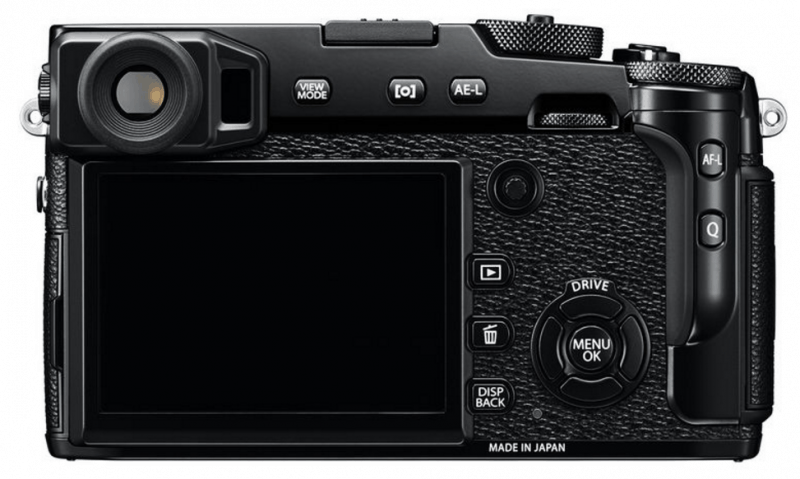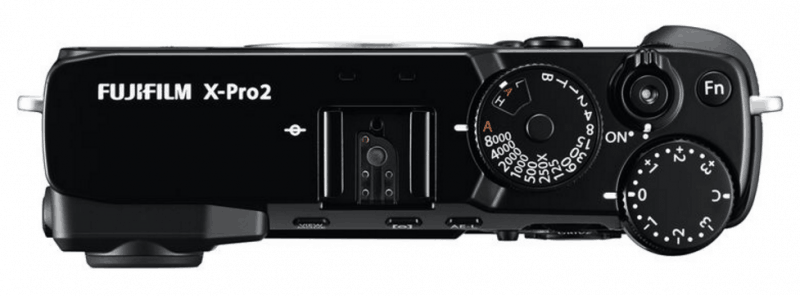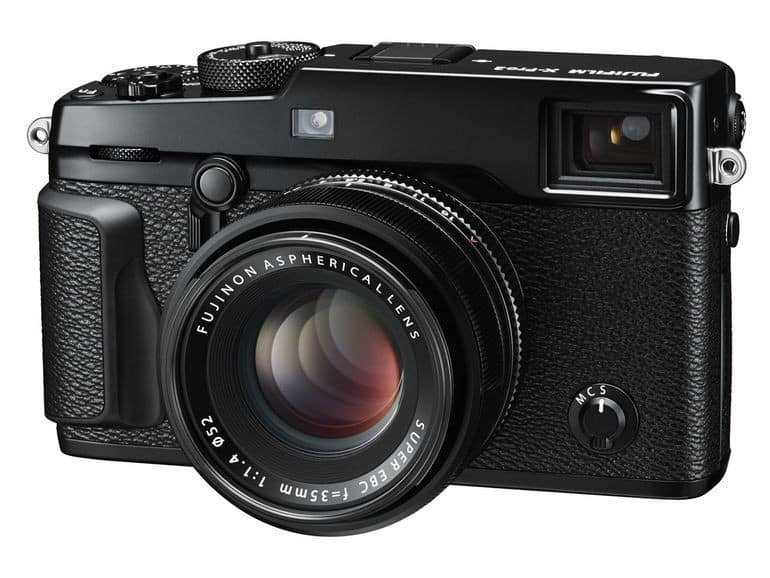Last Updated on January 13, 2019
Features
- 24.3MP X-Trans CMOS III APS-C sensor
- X-Processor Pro Engine
- Full HD video (1920x1080) at up to 60fps
- Advanced Hybrid Multi Viewfinder
- 273 selectable AF points with 7x7 Phase Detection AF Area
- 8.0 fps Continuous shooting; 51200 Extended ISO
- 3.0″, 1.62 millions dots LCD monitor
- 16 Film simulation modes
FujiFilm X-Pro2 Introduction Video
FujiFilm X-Pro2 Overview
FujiFilm first entered the consumer camera market with the X100, a fixed lens model. A follow up was released shortly after, the flagship X-Pro1. The two cameras were both well received so there was a high expectation for the X-Pro2, and thankfully it was able to deliver. As far as cameras go, the X-Pro2 comes packed with features that urge you to use it.
Design & Features
The FujiFilm X-Pro2 looks like a throwback camera: it sports a retro look and has a rangefinder-style configuration. Combined with an understated design (no sign of a logo or camera name on the body), the X-Pro2 looks like something that was leftover from a time long passed. But despite the vintage look, the camera comes with a range of modern features that encourage users to keep shooting.
Although the features of the X-Pro2 aren’t exactly groundbreaking, it does improve upon everything that was good with the X-mount cameras. For starters, the camera sports a new 24MP X-Trans CMOS III sensor that enhances image quality. It has done well in terms of user-friendliness by moving menus around making customization much easier. Video, which hasn’t been a strong suit in FujiFilm systems, has been much improved in the X-Pro2.

FujiFilm’s X-Trans III sensor is pretty impressive: nothing was sacrificed in order to improve pixel count. Issues like waxy skin tone when ISO is set at a high range have also been addressed. In terms of ISO range, the X-Pro2 can go as high as 25,600 but images start becoming a bit noisy around ISO 6,400.
The viewfinder of the X-Pro2 gets an upgrade too: there is an optical and electronic viewfinder (EVF) as well as a “hybrid” mode where a small thumbnail EVF view is shown in the lower portion of the screen when using the optical viewfinder. This is useful when using manual focus mode as you can get a clearer view of details.
The X-Pro2 also supports dual memory card slots, a feature that photographers covering events will openly welcome. Users can even use one card for shooting JPG images whit the other captures RAW. FujiFilm has also allowed users to use losslessly compressed RAW files but this option requires users to check whether or not their RAW software editor can support the new compression.
Users who are looking for features that add convenience such as an articulated screen or touchscreen menus will be disappointed with the X-Pro2. An even more glaring omission with the camera is the absence of 4K video support. In an age where 4K is becoming the norm, Fuji chose not offer this feature – it’s not even available through firmware update despite rumors stating the camera is fully capable of supporting 4K.
Another weak point for the X-Pro2 is its battery life. It can shoot a little over 150 photos on a full charge so photographers who intend to use this to cover events should grab extra batteries to ensure it lasts until the end of the event.

Pros
- It has an impressive viewfinder. Users can switch between an electronic viewfinder or an optical one by just flicking a lever. Getting the best of both worlds is also possible: a small EVF will appear on the bottom right portion of the screen when using the optical viewfinder.
- Its features are greatly improved from its predecessor. The X-Pro2 has a better sensor and better autofocus system resulting in better photos. Video capabilities are much improved as well.
Cons
- It’s not a camera for many users. The target audience of the FujiFilm X-Pro2 is very specific. It entices users who are not that interested in 4K video. It will not attract those who mostly dabble in action photography. Who the X-Pro2 lures in though are snappers who like documenting street scenes, enjoy taking portraits, and generally just capturing life’s moments.
- It doesn’t have a long battery life. Users will need to buy additional batteries if the camera is to be used for big events like weddings.
Final Thoughts
There are much better cameras like the full-framed versions being offered by Sony, but what they lack is a focus on the shooting experience. The FujiFilm X-Pro2 is able to achieve that but then again, it’s also not for every kind of photographer.
| Model Name | FUJIFILM X-Pro2 |
|---|---|
| Number of effective pixels | 24.3 millions pixels |
| Image sensor | 23.6mm x 15.6mm(APS-C)X-Trans CMOS III with primary color filter.
|
| Storage media | SD memory card(up to 2GB) / SDHC memory card(up to 32GB) / SDXC memory card( to 256GB) UHS-I/UHS-II(Only Slot 1)*1 |
| File format |
|
| Number of recorded pixels | L: (3:2) 6000 x 4000 / (16:9) 6000 x 3376 / (1:1) 4000 x 4000 M: (3:2) 4240 x 2832 / (16:9) 4240 x 2384 / (1:1) 2832 x 2832 S: (3:2) 3008 x 2000 / (16:9) 3008 x 1688 / (1:1) 2000 x 2000 |
| Lens mount | FUJIFILM X mount |
| Sensitivity | AUTO1 / AUTO2 / AUTO3(up to ISO12800) / ISO200 to 12800(1/3 step)(Standard Output Sensitivity) Extended output sensitivity : ISO100 / 125*3 / 160*3 / 25600 / 51200 |
| Exposure control | TTL 256-zone metering, Multi / Spot / Average / Center Weighted |
| Exposure mode | P(Program AE) / A(Aperture Priority AE) / S(Shutter Speed Priority AE) / M(Manual Exposure) |
| Exposure compensation | -5.0EV – +5.0EV, 1/3EV step (movie recording : -2.0EV – +2.0EV) |
| Image Stabilizer | Supported with OIS type lenses |
| Shutter speed |
|
| Continuous shooting | Approx. 8.0 fps(JPEG : 83 frames Lossless compression RAW : 33 frames Uncompressed RAW : 27 frames) Approx 3.0 fps(JPEG : endless Lossless Compression RAW : endless Uncompressed RAW : 36 frames)
|
| Auto bracketing | AE Bracketing(±3EV*3 / ±2EV / ±5/3EV / ±4/3EV / ±1EV / ±2/3EV / ±1/3EV) Film simulation bracketing(Any 3 types of film simulation selectable) Dynamic Range Bracketing (100% · 200% · 400%) ISO sensitivity Bracketing (±1/3EV / ±2/3EV / ±1EV) White Balance Bracketing (±1 / ±2 / ±3) |
| Focus |
|
| White balance | Automatic Scene recognition / Custom1 to 3 / Color temperature selection(2500K – 10000K) / Preset : Fine, Shade, Fluorescent light (Daylight), Fluorescent light (Warm White), Fluorescent light (Cool White), Incandescent light, Underwater |
| Self-timer | 10 sec. / 2 sec. Delay |
| Interval timer shooting | Yes (Setting : Interval, Number of shots, Starting time) |
| Flash modes |
|
| Hot shoe | Yes (Dedicated TTL Flash compatible) |
| Viewfinder |
|
| LCD monitor | 3.0-inch, aspect ratio 3:2, approx 1.62 millions dots |
| Movie recording | Full HD 1920x1080 60p / 50p / 30p / 25p / 24p up to 14 min. HD 1280x720 60p / 50p / 30p / 25p / 24p up to 28 min
|
| Film Simulation mode | 15 modes (PROVIA / Standard, Velvia / Vivid, ASTIA / Soft, CLASSIC CHROME, PRO Neg.Hi, PRO Neg.Std, Black& White, Black& White+Ye Filter, Black& White+R Filter, Black& White+GFilter, Sepia, ACROS, ACROS+Ye Filter, ACROS+R Filter, ACROS+G Filter) |
| Dynamic range setting | AUTO, 100%, 200%, 400% ISO restriction(DR100% : No limit, DR200% : ISO400 or more, DR400% : ISO800 ore more ) |
| Advanced filter | Toy camera / Miniature / Pop color / High-key / Low-key / Dynamic tone / Soft focus / Partial color (Red / Orange / Yellow / Green / Blue / Purple) |
| Wireless transmitter |
|
| Wireless function | Geotagging, Wireless communication (Image transfer), View & Obtain Images, Remote camera shooting, PC Autosave, instax printer print |
| Other functions | Exif Print, PRINT Image Matching II, Language(35 languages including JP / EN), Time difference, exposure preview on LCD during Manual mode, EVF brightness, EVF color, LCD brightness, LCD color, Mode effect on monitor, Customize, Copyright info*3 |
| Terminal |
|
| Power supply | NP-W126 Li-ion battery (included)
|
| Dimensions | 140.5mm (W) x 82.8mm (H) x 45.9mm (D) / 5.5in. (W) x 3.3in. (H) x 1.8in. (D) (Minimum depth: 34.8mm / 1.4 in.) |
| Weight | Approx. 495g / 15.7 oz. (including battery and memory card) Approx. 445g / 17.5 oz. (excluding accessories, battery and memory card) |
| Operating Temperature | -10°C – +40°C / +32°F – +104°F |
| Operating Humidity | 10 – 80% (no condensation) |
| Starting up period | Approx 0.4sec.
|
| Accessories included | Li-ion battery NP-W126 Battery Charger BC-W126 Shoulder strap Body cap Strap clip Protective cover Clip attaching tool Owner’s manual Warranty+D66 |
Unboxing the FujiFilm X-Pro2
User Reviews
Submit your review | |



